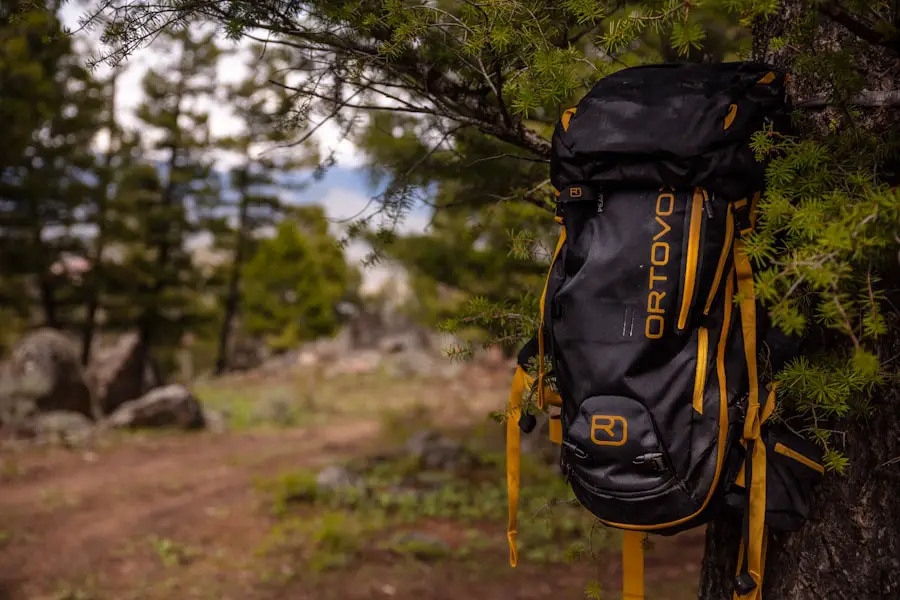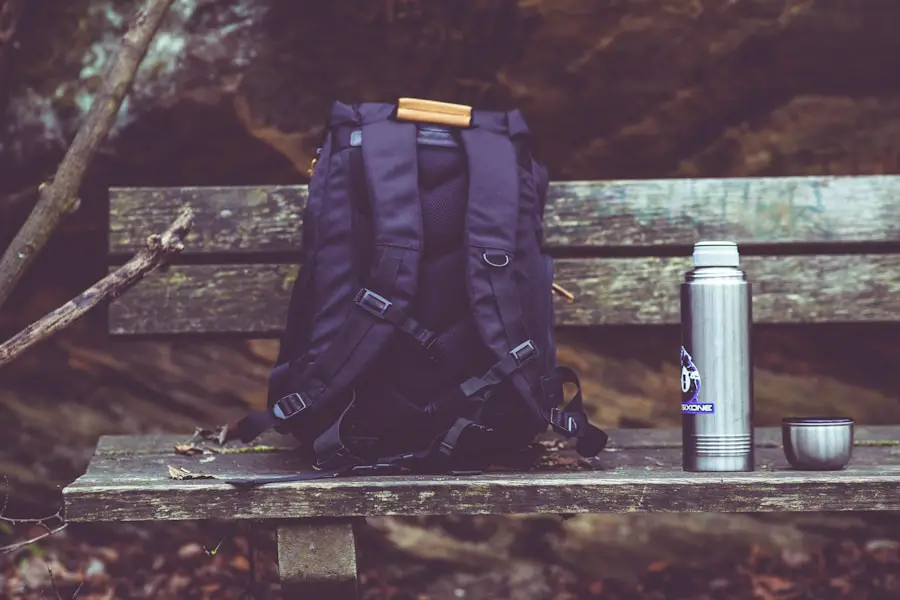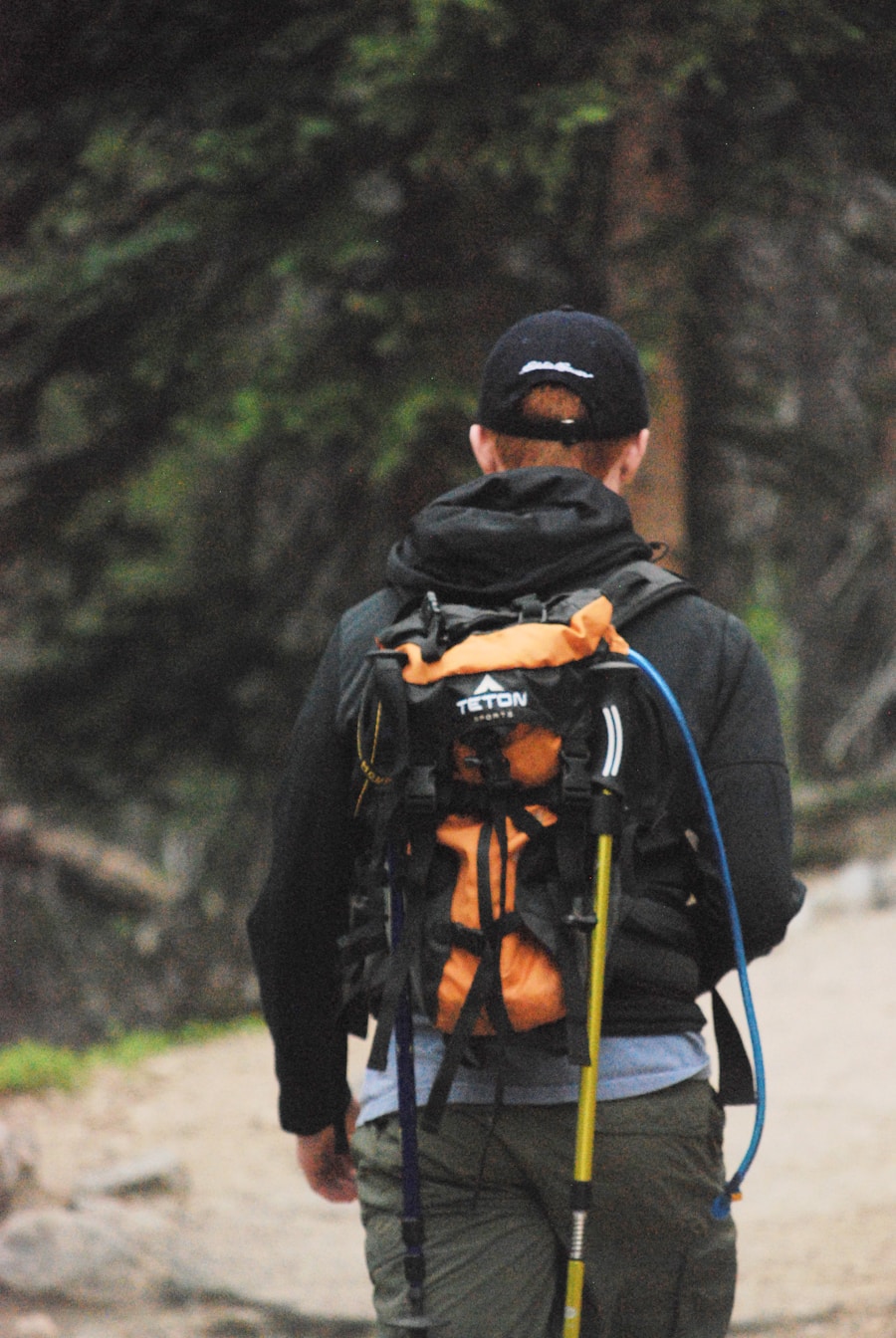Footwear is one of the most critical components of any outdoor adventure, whether it be hiking, trekking, or simply exploring nature. The right pair of shoes can make the difference between an enjoyable experience and a painful ordeal. When selecting footwear, it is essential to consider the terrain you will be traversing.
For rocky trails, a sturdy pair of hiking boots with good ankle support and a rugged sole is advisable. These boots are designed to provide stability and protect your feet from sharp rocks and uneven surfaces. Brands like Merrell and Salomon offer a range of options that cater to different foot shapes and preferences, ensuring that you can find a fit that works for you.
In contrast, if your journey involves lighter trails or urban exploration, trail runners or lightweight hiking shoes may be more appropriate. These shoes are designed for agility and comfort, allowing for quick movements and a more natural foot motion. They often feature breathable materials to keep your feet cool and dry during warmer months.
Regardless of the type of footwear you choose, it is crucial to break them in before embarking on a long trek. This process helps to prevent blisters and discomfort, ensuring that your feet remain in good condition throughout your adventure.
Key Takeaways
- Choose footwear that is comfortable, durable, and suitable for the terrain you will be hiking in.
- Look for backpacks and daypacks with padded straps, multiple compartments, and a comfortable fit for long hikes.
- Dress in layers and choose moisture-wicking clothing for hiking to stay comfortable and dry.
- Carry navigation tools such as a map, compass, or GPS device to stay on track during your hike.
- Pack a first aid kit with essential items such as bandages, antiseptic wipes, and pain relievers for any emergencies on the trail.
- Bring enough food and water for your hike, including high-energy snacks and a water purification method if needed.
- Consider carrying a lightweight shelter such as a tent or tarp for overnight hikes or unexpected weather changes.
- Pack safety and emergency gear such as a whistle, flashlight, and fire starter to stay prepared for any unexpected situations on the trail.
Backpacks and Daypacks
A well-designed backpack is an essential piece of gear for any outdoor enthusiast. The right pack not only carries your essentials but also distributes weight evenly across your body, reducing fatigue during long hikes. When selecting a backpack, consider the duration of your trip and the amount of gear you need to carry.
For day hikes, a daypack with a capacity of 15 to 30 liters is typically sufficient. These packs often come equipped with hydration reservoirs or pockets for water bottles, making it easy to stay hydrated on the go. For multi-day excursions, larger backpacks ranging from 50 to 80 liters are necessary to accommodate sleeping bags, cooking equipment, and extra clothing.
Features such as adjustable straps, padded hip belts, and ventilation systems can significantly enhance comfort during extended use. Brands like Osprey and Deuter are renowned for their innovative designs that prioritize both functionality and comfort. Additionally, consider the pack’s material; waterproof or water-resistant fabrics can protect your gear from unexpected rain showers, ensuring that you remain prepared for any weather conditions.
Clothing

The clothing you wear during outdoor activities plays a pivotal role in your overall comfort and safety. Layering is a fundamental principle in outdoor clothing, allowing you to adapt to changing weather conditions effectively. The base layer should consist of moisture-wicking materials that keep sweat away from your skin, helping to regulate body temperature.
Fabrics such as merino wool or synthetic blends are excellent choices for this layer due to their breathability and quick-drying properties. The middle layer serves as insulation, trapping heat while still allowing moisture to escape. Fleece jackets or down vests are popular options for this layer, providing warmth without adding excessive bulk.
Finally, the outer layer should be weather-resistant, protecting you from wind, rain, and snow. Look for jackets with features like adjustable hoods, cuffs, and ventilation zippers to enhance versatility in various conditions. Additionally, don’t overlook the importance of appropriate headgear; hats can shield you from sun exposure while beanies or balaclavas can provide warmth in colder climates.
Navigation Tools
| Navigation Tool | Usage | User Satisfaction |
|---|---|---|
| Google Maps | 80% | 90% |
| Waze | 15% | 85% |
| Apple Maps | 5% | 80% |
In the wilderness, reliable navigation tools are indispensable for ensuring you stay on course and reach your destination safely. While many hikers rely on GPS devices or smartphone applications for navigation, it is crucial to have traditional tools as backups. A topographic map provides detailed information about the terrain, including elevation changes, water sources, and trails.
Learning how to read a map is an invaluable skill that can enhance your outdoor experience and increase your safety. Companion tools such as a compass are essential for orienting yourself in unfamiliar areas. Understanding how to use a compass in conjunction with a map allows you to navigate effectively even when electronic devices fail due to battery depletion or lack of signal.
Additionally, some modern GPS devices come equipped with features like waypoint marking and route planning, which can be beneficial for more complex hikes. However, it is essential to familiarize yourself with these devices before heading out into the field to ensure you can use them efficiently when needed.
First Aid Kit
A well-stocked first aid kit is an essential item for any outdoor excursion, as injuries can occur unexpectedly in remote areas. When assembling your first aid kit, consider including items such as adhesive bandages in various sizes, antiseptic wipes, gauze pads, adhesive tape, and pain relievers like ibuprofen or acetaminophen. Additionally, include specialized items such as blister treatment kits and insect bite relief ointments to address common outdoor ailments.
It is also wise to include a first aid manual or guide that outlines how to treat various injuries and ailments. Familiarizing yourself with basic first aid techniques can empower you to respond effectively in emergencies. For those venturing into more remote areas or engaging in activities with higher risks—such as rock climbing or backcountry skiing—consider taking a wilderness first aid course.
These courses provide valuable skills tailored to outdoor environments, equipping you with the knowledge needed to handle more serious injuries until professional help can be reached.
Food and Water

Proper nutrition and hydration are vital components of any outdoor adventure. When planning meals for your trip, consider lightweight and non-perishable options that are easy to prepare. Freeze-dried meals are popular among backpackers due to their convenience; they require only hot water for preparation and provide balanced nutrition without adding significant weight to your pack.
Additionally, energy-dense snacks such as nuts, trail mix, energy bars, and jerky can help maintain energy levels throughout the day. Water is equally important; staying hydrated is crucial for maintaining stamina and preventing fatigue during physical exertion. Depending on the length of your trip and the availability of water sources along your route, you may need to carry a water filtration system or purification tablets to ensure safe drinking water.
Portable water filters allow you to refill your supply from streams or lakes while removing harmful bacteria and protozoa. It’s advisable to plan your water intake carefully; drinking small amounts regularly rather than waiting until you feel thirsty can help maintain hydration levels effectively.
Shelter
Having adequate shelter is essential for protection against the elements during outdoor adventures. The type of shelter you choose will depend on the duration of your trip and the conditions you expect to encounter. For short day hikes or outings where you return home at night, a lightweight tarp or emergency bivy sack may suffice for unexpected weather changes or rest breaks.
For longer excursions or camping trips, tents are the most common choice for shelter. When selecting a tent, consider factors such as weight, size, ease of setup, and weather resistance. Ultralight tents are favored by backpackers who prioritize weight savings without sacrificing durability; however, they may offer less space than traditional tents.
Conversely, family-sized tents provide ample room but can be cumbersome to carry on long hikes. Additionally, ensure that your tent has adequate ventilation features to prevent condensation buildup inside.
Safety and Emergency Gear
Safety gear is an often-overlooked aspect of outdoor preparation but is crucial for ensuring a safe experience in the wilderness. Items such as headlamps or flashlights are essential for navigating after dark; LED models offer long battery life and bright illumination while being lightweight enough for easy transport. Always carry extra batteries or a solar charger if you plan on being out for an extended period.
Emergency gear should also include items like a whistle for signaling distress calls and a multi-tool or knife for various tasks ranging from food preparation to gear repairs. A fire starter kit—comprising waterproof matches or a flint striker—can be invaluable in emergency situations where warmth or cooking is necessary. Additionally, consider carrying an emergency blanket or bivy sack that can provide warmth in case of unexpected overnight stays in the wilderness due to injury or other unforeseen circumstances.
In conclusion, thorough preparation is key when venturing into the great outdoors. By equipping yourself with the right footwear, backpacks, clothing layers, navigation tools, first aid supplies, food and water provisions, shelter options, and safety gear, you can enhance your outdoor experience while minimizing risks associated with nature’s unpredictability. Each component plays a vital role in ensuring not only comfort but also safety during your adventures in the wild.
If you are planning a hiking trip, it’s important to consider the best time to travel to Australia and New Zealand. These countries offer stunning landscapes and diverse hiking opportunities, but the weather can vary greatly depending on the season. To ensure you have the best experience possible, it’s crucial to plan your trip during the optimal time of year. Check out this article on the best time to travel to Australia and New Zealand for more information: Best Time to Travel to Australia and New Zealand.
FAQs
What is hiking?
Hiking is a recreational activity that involves walking in natural environments, often on trails or paths. It is a popular outdoor activity that can range from easy walks to more challenging treks.
What do you need to go hiking?
To go hiking, you will need appropriate footwear, such as hiking boots or trail shoes, comfortable clothing suitable for the weather, a backpack to carry essentials, water and snacks, a map or GPS device, and possibly trekking poles for stability.
What are essential items to bring when hiking?
Essential items to bring when hiking include water, a first aid kit, a map or GPS device, a flashlight or headlamp, a multi-tool or knife, sun protection (such as sunscreen and sunglasses), and a whistle for emergencies.
What are some safety tips for hiking?
Some safety tips for hiking include informing someone of your hiking plans, staying on marked trails, being aware of wildlife, bringing enough water and snacks, and being prepared for changes in weather. It’s also important to know your own physical limits and to hike within them.
What are some popular hiking destinations?
Popular hiking destinations include national parks such as Yosemite and Yellowstone, as well as famous trails like the Appalachian Trail and the Pacific Crest Trail. Other popular hiking destinations can include state parks, nature reserves, and mountain ranges around the world.
